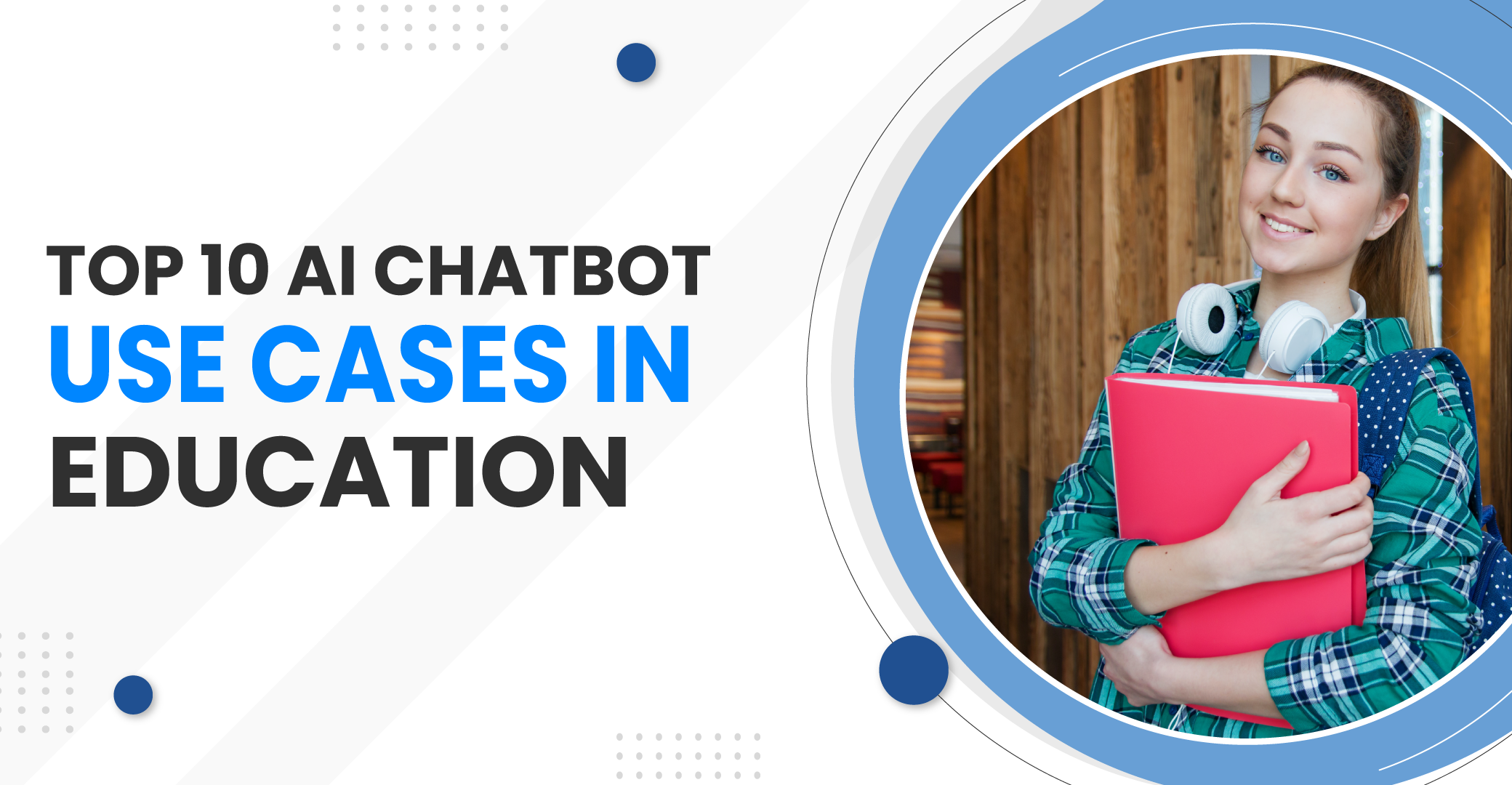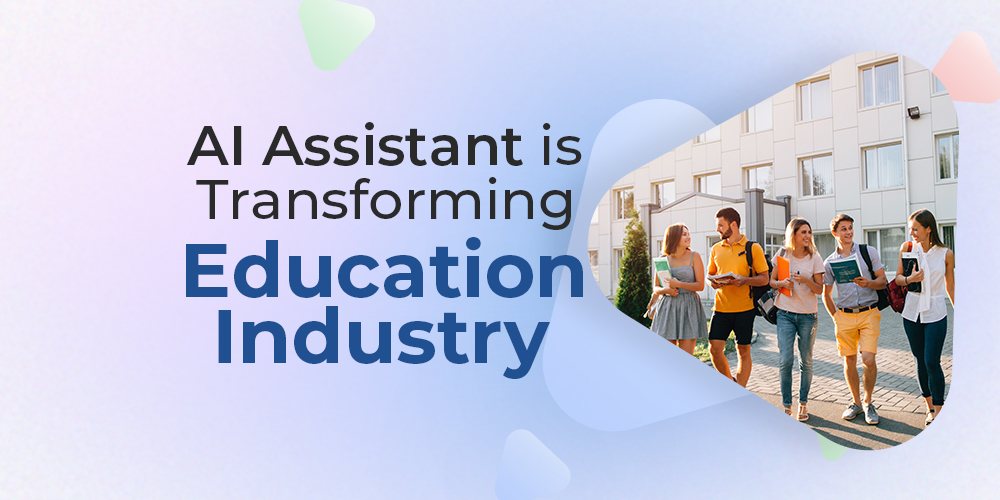Top 10 AI Chatbot Use Cases In Education
Education institutions have constantly been challenged to accommodate all students’ different learning and understanding paces, regardless of demographics. As the education sector juggles meeting the expectations of students, parents, and teachers, it has compromised its commitment to providing students with the most effective learning experiences possible. By using chatbots in education, you can get rid of all the hassle.
Chatbots in educational institutions are changing the way institutions interact with their students. They’re enabling students to learn more and access all the activities they can participate in.
An overview of the education industry in 2022
Despite the pandemic, the education industry was technologically advanced long before. Among the five most heavily used business sectors on the internet, education uses and profits from chatbots in significant numbers. They are deployed across every platform on the internet, from social media to business websites. It is a privilege for tech-savvy students, parents, and teachers to interact with chatbots, and institutions are seeing happier employees and satisfied students.
Education is where chatbots are gaining popularity across a wide range of business areas, including online tutoring, student support, teacher assistants, administrative tools, assessing results, and generating reports. As part of this article, we will examine all the possible applications and benefits of educational chatbots and build a future perspective on chatbots in education.
We expect this article will help you understand the topic deeply and guide you in making an informed decision if you consider deploying conversational AI in your educational institution. Let’s look at a few applications of educational chatbots to get started.
AI chatbot use cases in the education sector
Chatbots have a wide range of uses, but here are a few applications in the educational sector. Institutes looking for help addressing any of these use cases can deploy chatbots and get the desired results.
1. Personalized Online Education
Students learning habits can be identified by AI chatbots, which can closely observe patterns of studying and content consumption and help them excel in their fields as a result.
School administrators can provide students with customized learning experiences with intelligent tutoring systems. Everyone does not understand and learn the same way; some may even have disabilities. Chatbots can ensure that students gain maximum knowledge- inside and outside the classroom- by tailoring the learning plan based on the trouble-making topics or subjects. In addition to providing study materials when needed, they also assist students.
2. Student Engagement
During the pandemic, virtual learning has led to a decline in student engagement. Both teacher-student interaction and student-student engagement have taken a backseat. Teachers are making a great deal of effort to improve students’ understanding of subjects.
The virtual platform allows students to get help during and after class, so there are no compromises in the learning process. Chatbots can be used in this scenario to interact with students continuously and answer their queries quickly.
Chatbots can help improve student engagement by replacing the outdated approach of exchanging messages over social media platforms once in a while.
For students to communicate about projects, assignments, deadlines, presentations, events, and activities, they can create alum groups or project groups on chatbots. By interacting with each other, they can create an environment that is conducive to learning and studying.
3. Student support
An estimated 9.1% compound annual growth rate for e-learning by 2026. More and more corporate workers are using distance learning courses as it doesn’t require a break from work and family.
The rapid growth of student enrollment calls for solid student support strategies for educational institutions. Student questions before registration, during the course, and after the class should be prioritized and resolved quickly.
A chatbot can be a great tool for providing excellent student support and instant answers to students’ questions.
4. Teaching assistants
Most of the tasks teachers perform are repetitive and mundane. They work well beyond their office hours to ensure their students receive excellent learning experiences. For instance, tracking student attendance, scoring tests, or sending out assignments to students are some of the repetitive tasks teachers perform.
Using chatbots as teachers’ assistants can automate repetitive tasks and reduce teacher fatigue. With artificial intelligence, chatbots can help teachers justify their work without wasting time.
Students whose attendance is automated need to receive the notes and recordings of lectures recorded during their absence from school via chatbots if an institution automates this task.
5. Companion in administrative duties
Educational chatbots can become part of a student’s administrative support system. Instead of visiting the office and waiting in long lines, they can text to get answers to questions.
6. Proactive assistance
If robots are carefully trained in the education industry, they can proactively assist students before they even ask. Helping students with payments, adding new modules to the syllabus, and meeting deadlines can be proactive and result in a better student experience.
There are even options for schools to send personalized messages such as “Bring your water bottles as there is an issue with the school water tank” or “The school is closed today due to the storm” and send messages that bridge the gap between students and schools.
7. Getting feedback
There can never be too much feedback in any industry. Ken Blanchard said, “feedback is the breakfast of champions,” which is so true!
Schools can collect feedback on all aspects of their operations, including teachers, syllabuses, admissions, and hygiene, and become champions in their respective fields.
A chatbot can help schools extract helpful information from their stakeholders by collecting feedback after each conversation or after a particular process has been completed. This would help them address poor results and identify useful information to use.
8. Analyses and assessments
Assessment is no question crucial for both students and educational institutions. Even though MCQs and only one-word answers can easily be handled by software, subjective responses still need to be assessed by humans.
Artificial intelligence and machine learning can automatically evaluate and score student responses. Teachers can use AI chatbots to generate their students’ scorecards.
This advancement allows teachers to focus on teaching rather than assessing and evaluating. As a result, education chatbots can share study material with students for subjects that require attention.
9. Repository of data
A chatbot can be used as both a tool for collecting and distributing data in the education field. In addition to uploading all student details and feeding data to get desired results, teachers can also use them to simultaneously distribute important information and lessons to all students.
In addition to reducing the possibility of errors, data collection and automation allows for constant monitoring.
By having all data in one place, institutions can make more informed decisions and solve problems more quickly.
10. Analyzing the sentiment of students
Teachers must understand the student’s sentiments during and after classes. All their efforts will be wasted if students are confused and unclear about the topic.
Since chatbots comprehend sentiments, they can improve teachers’ teaching practices to provide better learning experiences and clear students’ doubts at the beginning of the course.
Conclusion
Businesses are changing how they communicate with their customers through conversational AI, and everyone loves it. Enterprises are increasingly adopting artificial intelligence and investing in it to automate different business processes, such as customer support, marketing, sales, engagement, and overall customer experience.
Providing a world-class customer experience and automating your business processes is one of the greatest strengths of Turabit’s conversational AI platform. Schools can engage with their prospective students from the moment of admission to make learning fun for them with our AI chatbots in education.
Contact us if you’re interested in deploying a chatbot for your educational institution and learning more about how it works. During the deployment and usage of your educational chatbot, our experts will help you step-by-step.






